The decision to convert a half acre of imported turf grass to a lush native wildflower prairie was a long time coming for Ann Newman in San Antonio.
Newman has gardened since she was a child, a skill learned from her mother. For years, she struggled to keep up the legacy lawn that occupied the space in the middle of her half-circle driveway at the high profile home she shares with her husband John “Chico” Newman in San Antonio’s historic Monte Vista neighborhood.
Their century-old home stands on the same street as the renown Bushnell apartments in the late nineteenth-early twentieth century historic district described as an “opulent suburb” developed by oil and cattle barons. Oversized lots, Tara-style mansions, and acres of lush green grass dominate the surrounding landscapes. Some residents–not the Newmans–have drilled their own private water wells to subvert local watering restrictions and the high water bills that accompany the irrigation of large lawns during times of drought and high temperatures.
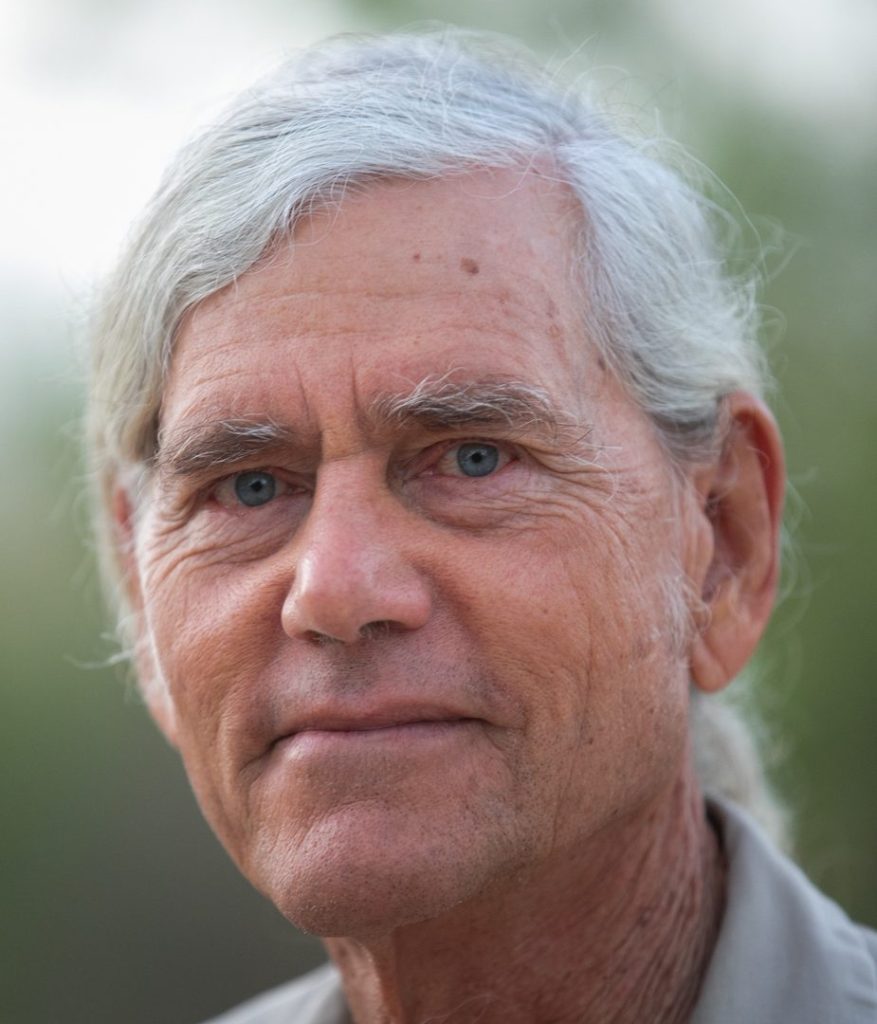
Bill Neiman, Native American Seed –Courtesy photo
Today, that legacy lawn looks like a lush carpet of Winecup, Callirhoe leiocarpa. Dark pink poppies jut from profuse stems, with bluebonnets, coreopsis and “Scrambled eggs” thrown in.
“It’s a such a joy that we’ve turned the corner,” said Newman, a conservationist, philanthropist and former beekeeper.
Newman says she struggled to keep the grass for years. “There were years that it was green and beautiful,” she recalls, “but then, at some point, it stopped raining regularly.”
Lucky for Newman, she had become friends with Bill Neiman, founder of Native American Seed, an all-native seed supplier based in Junction, Texas, about two hours from San Antonio. The two had worked on several conservation projects together as well as on several boards, including the Hill Country Alliance.
Neiman has a deserved reputation as a native seed prophet. The longtime native plant advocate started his family business in 1973 in Flower Mound, Texas, as a nurseryman and landscaper. In 1995, he moved the family business to a 250-acre ranch along the Llano River where they began cultivating native seeds.
Since, the company has evolved to provide a variety of services as well as a warehouse in New Braunfels where they sell more than 170 species of native wildflower and grass seed–50 of which are grown on their Llano River property. Neiman and his seed stock have played a critical role in promoting native plants over non-native plants, which demand an unreasonable amount of water and other resources during water-tight times in Texas and elsewhere.
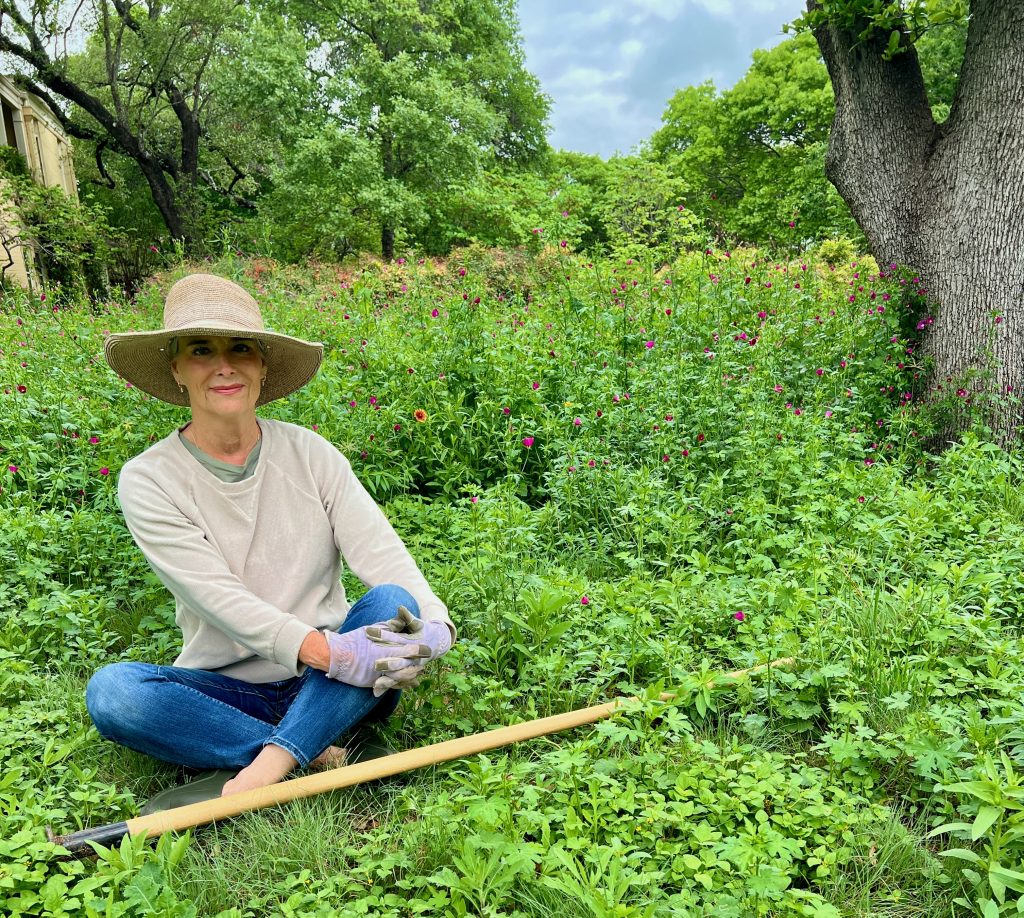
San Antonio resident Ann Newman takes a break from weeding her wildflower meadow. –Photo by John “Chico” Newman
Apart from producing and marketing native seed, Neiman sometimes works on restoring habitat on large ranches with hundreds of acres, but because “Ann is a friend,” he agreed to help her transform her urban landscape to a native wildflower prairie.
The project started in March of 2023. Neiman and his son-in-law George Cates spearheaded the initiative. First step: spray the entire front lawn with Round-Up.
Yes, that’s correct. One of the chief promoters of native landscaping uses Round-Up, the often vilified-but-very effective herbicide invented by Monsanto, now known as Bayer.
Neiman points out that landscapes riddled with invasive species are not different from other organisms with cancer. “It’s the same kind of cringe. Trying to remove perennial warm season exotic grasses–pretty hard, actually.” Systemic herbicides like Glyphosate–the generic name for Round-Up–do the job effectively, he points out.
“The gratifying point that I like to put my arms around is this is the last time that land will ever be treated like that again,” Neiman adds emphatically.
Newman recalls that they waited for everything to die, and then a crew came in with specialized machinery and removed trailer loads of debris, leaving only bare soil. She remembers it was alarming to watch her front yard reduced to naked earth.
Then a selection of native seeds were spread at the rate of 56 live seeds per square foot. The mix included wildflowers for sun and shade, native grasses for sun and shade, and several milkweeds.
Neiman’s crew tamped the seeds down with a roller, and Newman later watered the landscape, adhering to San Antonio’s restrictive watering rules. In times of drought, SAWS, the city’s water utility, allows residents to water their yards only one day per week during early morning or evening, depending on their address.
The following spring, nothing came up but Rescue grass, a prolific brome grass introduced to the U.S. from Argentina in the 1800s to provide winter forage for cattle and other animals. The uninvited occupant appears to have been amply banked in the soil after so many years of lawn cultivation.
Another round of herbicides followed, and more native seeds were spread in the spring of 2024. A healthy crop of invasive Cheat grass emerged in the fall, requiring one more round of herbicides, and reseeding once again.
In late 2024, one of the hottest, driest years on record and moving into the sixth year of local drought in San Antonio, Newman was getting concerned that her wildflower meadow might never come to be. “It was very disheartening,” she said.
But then, in March of 2025, the rains came.
“We had 2.3 inches–it just popped,” says Newman. “It just came alive. To just walk out there and look at these plants–the coreopsis, bluebonnets, Winecups, Scrambled eggs, Indian blanket. It’s wondrous. I feel like I know every square foot of that yard. And I didn’t know it intimately before when it was all grass.”
Since, Newman has become an obsessive weed puller. Each morning she heads out to her personal prairie and admires the blooms, bees, beetles, butterflies and birds, armed with a special weed hoe that Neiman gifted her: the Tomahawk. “I can spot a dandelion at 50 yards,” she says, a note of maternal protection in her voice.
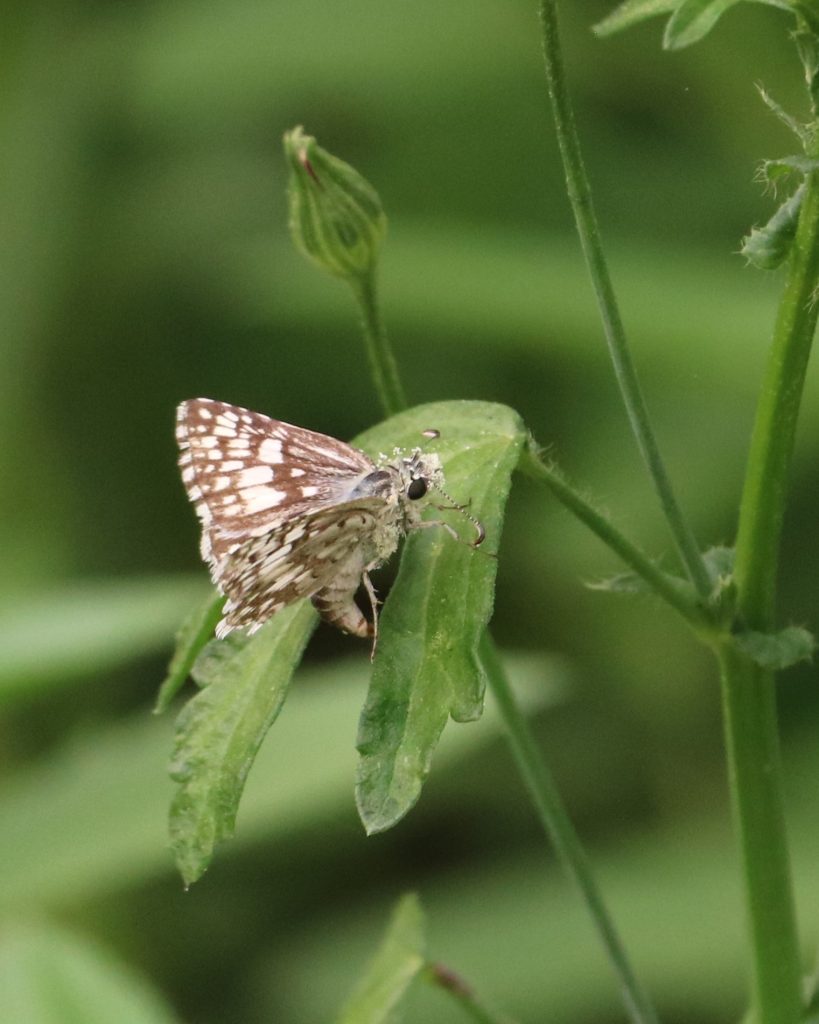
A skipper lays eggs on a Winecup leaf in the Newmans’ transformed wildflower prairie. –Photo by Lee Marlowe
The neighbors have been mostly supportive, she notes. During that dry spell when the yard looked like a field of mass destruction, several commented that the landscape appeared “unkempt.” One neighbor who spotted her working in the yard as the plants were starting their recovery asked what she was up to. Newman replied that she was weeding.
“How can you tell? They all look like weeds to me,” said the neighbor.
Apart from the gratification of fueling the environment with plants with purpose, the Newmans will also be enjoying a huge reduction on their water bill. Newman cringes upon recalling the cost of irrigating a large expanse of St. Augustine and Zoysia grass during hot Texas summers.
“I won’t tell you how much it cost,” she said. “But it was exorbitant.”
Not any more. Newman feels as though they’ve turned the corner.
“My idea was to create this sort of canvas with this basic layer of grasses and flowers,” she says. “Now I’m going to start popping in the perennials and shaping a garden. It’s wild, but you can adapt the bare spots and add a little more lushness with appropriate natives.”
The front yard prairie is gaining attention. San Antonio’s Native Plant Society President Lee Marlowe caught wind of the project and did a drive-by for a look-see.
“We need more native meadows and less manicured lawns in San Antonio!” says Marlowe. “Native landscapes can be tailored to any design aesthetic and yard size, and the availability of native plants and seeds keeps getting better here each year.” For resources, check out the NPSOT website.
Neiman views the undertaking as a high profile example for the community. “The bigger thing is we have some iconic citizens, well-known citizens, that are setting a model about where the future is going,” he says.
Related Articles
- San Antonio architect converts downtown parking lot into a native “prairie cloud”
- Wherehousebarn pollinator garden beckons butterflies and tenants to downtown San Antonio
- In the butterfly garden: use solarization to convert ugly grass into a vibrant butterfly garden
- Adding pollinator habitat to resilience gardens can boost yields and relieve stress
- HOAs resist native plant landscaping despite conservation benefits
- How to plan a successful butterfly garden
- Mostly native butterfly garden outperforms lawn every time
- Downtown River walk plot converts to pollinator garden, creature haven
- A year in the life of an urban butterfly garden
Like what you’re reading? Don’t miss a single article from the Texas Butterfly Ranch. Sign up for email delivery at the bottom of this page, like us on Facebook, follow us on Twitter, @monikam or on Instagram. And check out my book on the monarch butterfly migration!


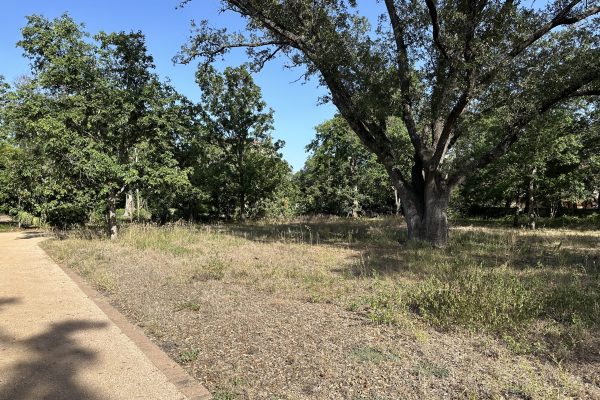
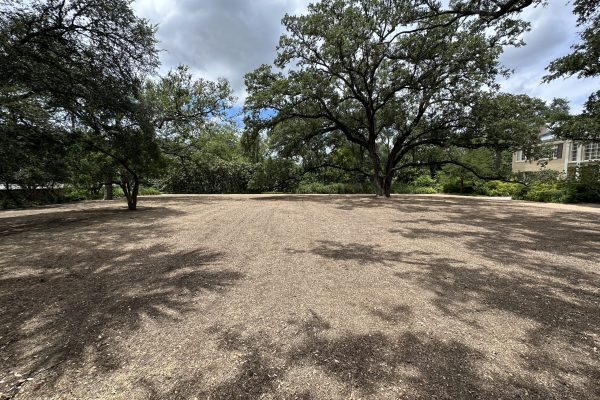

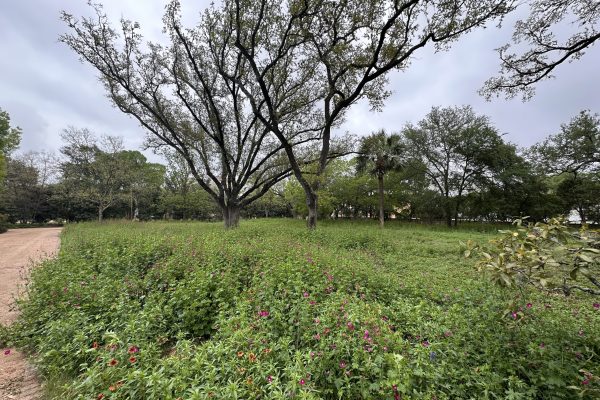

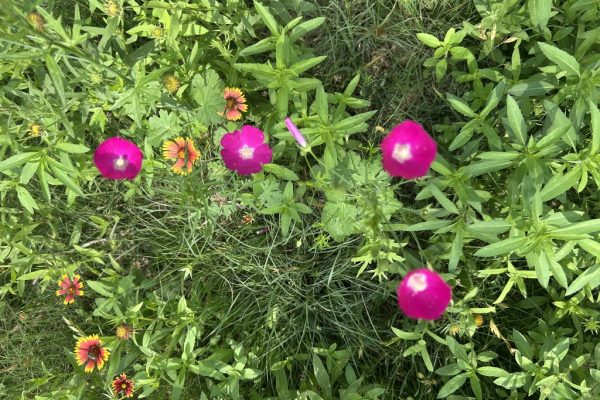
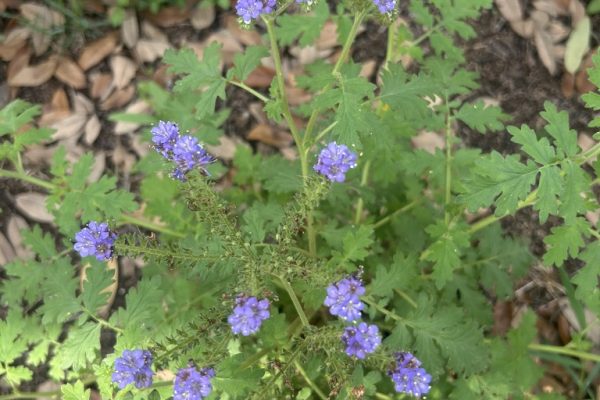
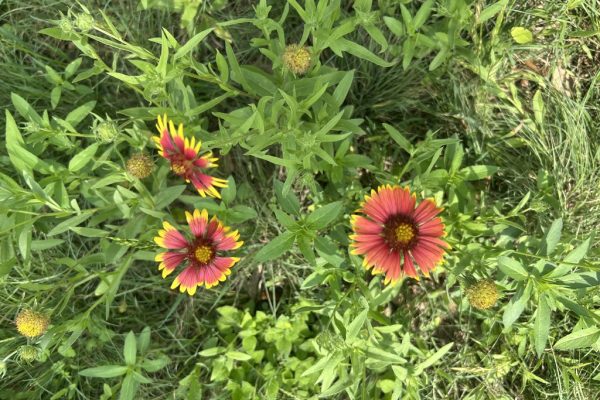
Great story! I attended an NPSOT native landscaping class last Saturday so our Bastrop NPSOT chapter can start teaching others how to convert lawn to native prairie. They cited this document on why and how to use herbicides when it’s appropriate: https://www.fs.usda.gov/Internet/FSE_DOCUMENTS/stelprdb5386111.pdf
My thought is that human interference created an invasive landscape with species like Bermudagrass, and human technology MAY be required to reset and move forward once and for all with a native prairie project without having a running battle. Once natives get installed, dealing with Bermudagrass becomes much more difficult. Post-treatment, using Permaculture/no-till methods, we can quickly restore the soil biome.
Our Bastrop Master Gardener and Master Naturalist Associations have begun working with the City of Bastrop to convert 2 acres of Bermudagrass to native prairie, using a custom mix from Native American Seed. Texas Parks and Wildlife agreed to consult, and they recommended two glyphosate treatments this year in order to “wipe the slate” and plant our prairie for 2026.
Of course, everybody is free to decide how they want to proceed, so this isn’t an endorsement either direction.
Great vision and article. Lucky girl receiving a “Tomahawk”. I ordered one two years ago and they are always on back order. Time to give it another go!